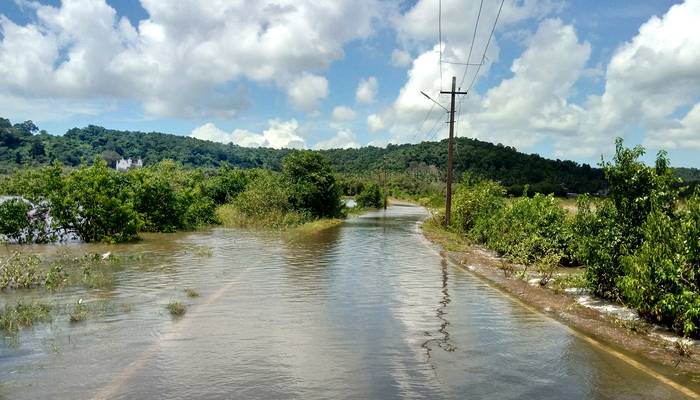
On 6 August 2021, the Intergovernmental Panel on Climate Change (IPCC) formally approved and released its latest report, the ‘Summary for Policymakers’ of the ‘Climate Change 2021: The Physical Science Basis’ and its underlying assessment.
“It is unequivocal that human influence has warmed the atmosphere, ocean and land. Widespread and rapid changes in the atmosphere, ocean, cryosphere and biosphere have occurred,” is one of what are called the report’s headline statements. “Global surface temperature has increased faster since 1970 than in any other 50-year period over at least the last 2,000 years” is another. “Temperatures during the most recent decade (2011-2020) exceed those of the most recent multi-century warm period, around 6,500 years ago” is one more.
What we have seen, for more than a decade, is the insistence by multi-lateral agencies and organisations that we are beset by natural circumstances that with every passing year have become more threatening. This insistency speaks of a ‘climate emergency’, by which is generally meant the human-induced increase in atmospheric greenhouse gases like CO2 and CH4, which can be connected to rising global temperatures, and to the incidence of droughts, floods heatwaves, crop failures, rising sea levels.
What we have also seen is ‘climate emergency’ as declarations by politicians, by people who are known as ‘policy makers’, by various kinds of scientists and researchers in a number of scientific disciplines, and by international agencies and formal grupings that have long since become too many to count. What they have in common is the claim that they are taking the climate emergency seriously and that we can trust them to do something effective about it.
What do they want to do? The new IPCC report repeats all the old emergencies:
- The land surface will continue to warm more than the ocean surface.
- With every additional increment of global warming, changes in extremes continue to become larger.
- There will be an increasing occurrence of extreme events.
- The Arctic is projected to experience about three times the rate of global warming.
- Heavy precipitation events will intensify and become more frequent in most regions.
- Intense tropical cyclones are projected to increase.
- Precipitation and surface water flows are projected to become more variable over most land regions.
- A warmer climate will intensify very wet and very dry weather.
- Monsoon precipitation is projected to increase in the mid- to long-term for regions that have monsoon rains.
For the year 2021, the latter half of the year is being prepared to see a number of large meetings, or negotiations, on a group of themes that are linked: climate, biodiversity, food, conservation of natural regions. We have begun with highlighting a very few messages from the August IPCC report and will do the same in teh weeks and months ahead for what remains to be rolled out from the well-stocked stables of the multi-lateral derby.
We have seen it become more obvious that the widely spread group of organisations and agencies active in these subjects are following a particular line. This line uses as its currency the addressing of the global climate and environmental crisis. The objectiv is to “save nature” but by turning it into a huge money spinner. That spinning of money is meant to inject new fuel into the world’s economic growth model. This sees nature’s cycles and processes being called instead “natural capital” which is to be priced and tradable on financial markets.
Of course, we strongly oppose such a deviant view of nature and oppose just as much the mendacious financial jugglery that these agencies and organisations are advancing, as fast as they can. Nature is not capital, is not to be and cannot be valued in the ways that they insist upon, and it is abhorrent that nature is being described as ‘tradeable’ in any way. We will continue to explain why between now and the end of 2021. (RG)
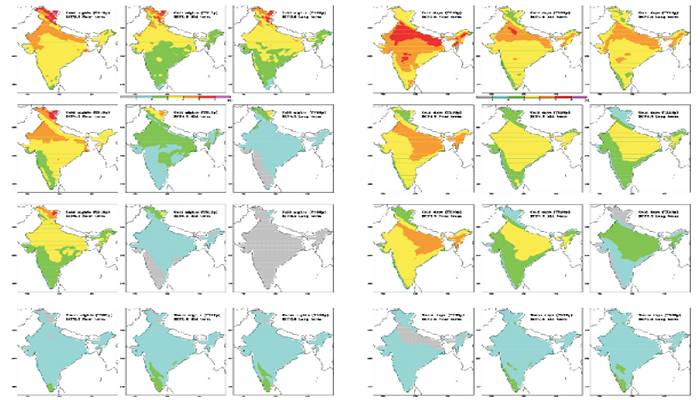
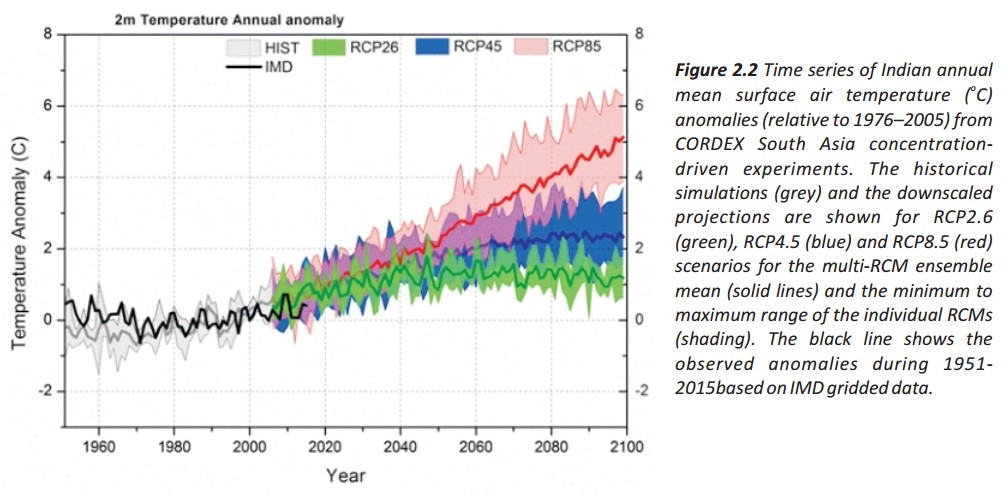
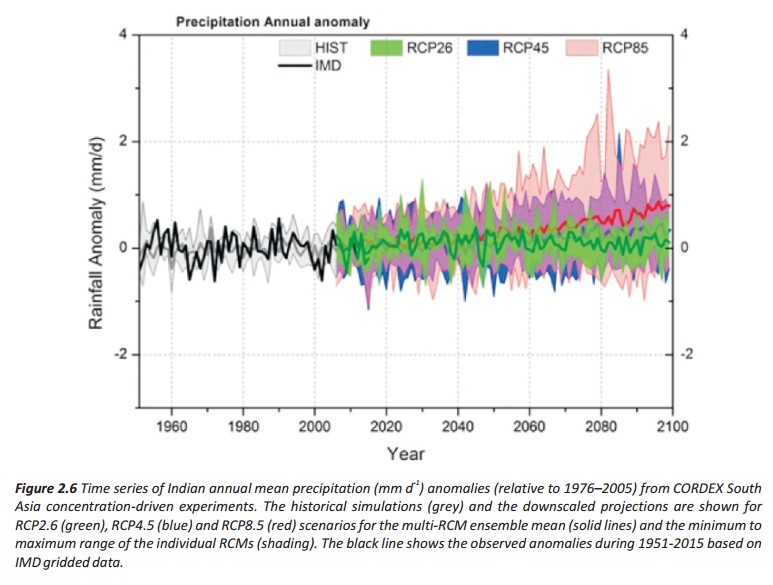 ⊗ Monthly increase in all India mean surface air temperature based on REA estimate is relatively higher during winter months than in the summer monsoon months throughout the 21st century under the three RCP scenarios.
⊗ Monthly increase in all India mean surface air temperature based on REA estimate is relatively higher during winter months than in the summer monsoon months throughout the 21st century under the three RCP scenarios.





 The Government of India has said that the country’s Intended Nationally Determined Contributions (INDCs) are balanced and comprehensive. In official statements, the government said that INDCs include reductions in the emissions intensity of its GDP by 33 to 35 per cent by 2030 from 2005 level and to create an additional carbon sink of 2.5 to 3 billion tonnes of CO2 equivalent through additional forest and tree cover by 2030. India has also decided to anchor a global solar alliance, INSPA (International Agency for Solar Policy & Application), of all countries located in between Tropic of Cancer and Tropic of Capricorn.
The Government of India has said that the country’s Intended Nationally Determined Contributions (INDCs) are balanced and comprehensive. In official statements, the government said that INDCs include reductions in the emissions intensity of its GDP by 33 to 35 per cent by 2030 from 2005 level and to create an additional carbon sink of 2.5 to 3 billion tonnes of CO2 equivalent through additional forest and tree cover by 2030. India has also decided to anchor a global solar alliance, INSPA (International Agency for Solar Policy & Application), of all countries located in between Tropic of Cancer and Tropic of Capricorn. The INDCs centre around India’s policies and programmes on promotion of clean energy, especially renewable energ
The INDCs centre around India’s policies and programmes on promotion of clean energy, especially renewable energ
 The INDCs outline the post-2020 climate actions they intend to take under a new international agreement. The INDCs document is prepared with a view to taking forward the Prime Minister’s vision of a sustainable lifestyle and climate justice to protect the poor and vulnerable from adverse impacts of climate change. Ministry of Environment, Forest and Climate Change adopted an inclusive process for preparation of India’s INDCs. It held stakeholder consultations with the specific involvement of the key Ministries and State Governments. Interactions were also held with civil society organisations, thinktanks and technical & academic institutions of eminence. The Ministry had commissioned Greenhouse Gas (GHG) modeling studies for projections of GHG emissions till 2050 with a decadal gap. The gist of all these consultations & studies were taken on board before submitting India’s INDCs. The government zeroed-in on a set of contributions which are comprehensive, balanced, equitable and pragmatic and addresses all the elements including Adaptation, Mitigation, Finance, Technology Transfer, Capacity Building and Transparency in Action and Support.
The INDCs outline the post-2020 climate actions they intend to take under a new international agreement. The INDCs document is prepared with a view to taking forward the Prime Minister’s vision of a sustainable lifestyle and climate justice to protect the poor and vulnerable from adverse impacts of climate change. Ministry of Environment, Forest and Climate Change adopted an inclusive process for preparation of India’s INDCs. It held stakeholder consultations with the specific involvement of the key Ministries and State Governments. Interactions were also held with civil society organisations, thinktanks and technical & academic institutions of eminence. The Ministry had commissioned Greenhouse Gas (GHG) modeling studies for projections of GHG emissions till 2050 with a decadal gap. The gist of all these consultations & studies were taken on board before submitting India’s INDCs. The government zeroed-in on a set of contributions which are comprehensive, balanced, equitable and pragmatic and addresses all the elements including Adaptation, Mitigation, Finance, Technology Transfer, Capacity Building and Transparency in Action and Support. Planned actions and economic reforms have contributed positively to the rapidly declining growth rate of energy intensity in India.
Planned actions and economic reforms have contributed positively to the rapidly declining growth rate of energy intensity in India.  India has adopted several ambitious measures for clean and renewable energy, energy efficiency in various sectors of industries, achieving lower emission intensity in the automobile and transport sector, non-fossil based electricity generation and building sector based on energy conservation. Thrust on renewable energy, promotion of clean energy, enhancing energy efficiency, developing climate resilient urban centres and sustainable green transportation network are some of the measures for achieving this goal.
India has adopted several ambitious measures for clean and renewable energy, energy efficiency in various sectors of industries, achieving lower emission intensity in the automobile and transport sector, non-fossil based electricity generation and building sector based on energy conservation. Thrust on renewable energy, promotion of clean energy, enhancing energy efficiency, developing climate resilient urban centres and sustainable green transportation network are some of the measures for achieving this goal. Solar power in India is poised to grow significantly with Solar Mission as a major initiative of the Government of India. A scheme for development of 25 Solar Parks, Ultra Mega Solar Power Projects, canal top solar projects and one hundred thousand solar pumps for farmers is at different stages of implementation. The Government’s goal of ‘Electricity for All’ is sought to be achieved by the above programs that would require huge investments, infusion of new technology, availability of nuclear fuel and international support.
Solar power in India is poised to grow significantly with Solar Mission as a major initiative of the Government of India. A scheme for development of 25 Solar Parks, Ultra Mega Solar Power Projects, canal top solar projects and one hundred thousand solar pumps for farmers is at different stages of implementation. The Government’s goal of ‘Electricity for All’ is sought to be achieved by the above programs that would require huge investments, infusion of new technology, availability of nuclear fuel and international support. The energy efficiency of thermal power plants will be systematically and statutorily improved. Over one million medium and small enterprises will be involved in the Zero Defect Zero Effect Scheme to improve their quality, energy efficiency, enhance resource efficiency, pollution control, waste management and use of renewable energy.
The energy efficiency of thermal power plants will be systematically and statutorily improved. Over one million medium and small enterprises will be involved in the Zero Defect Zero Effect Scheme to improve their quality, energy efficiency, enhance resource efficiency, pollution control, waste management and use of renewable energy.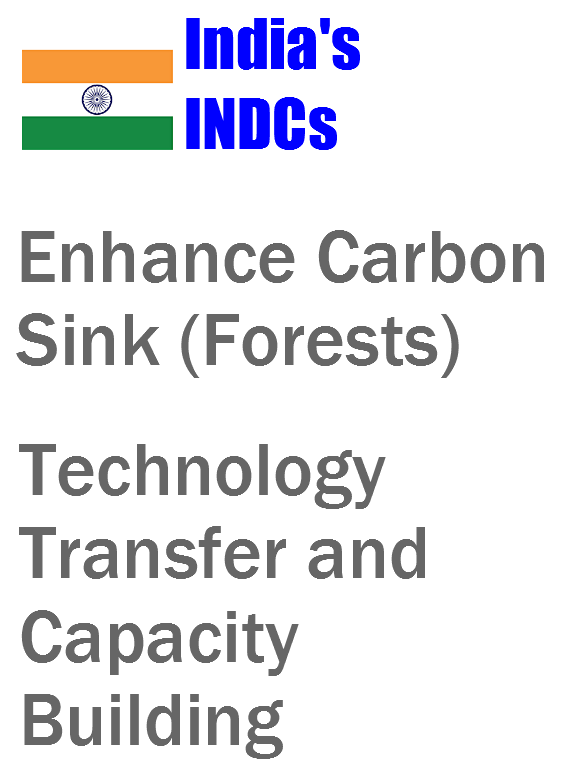 The range of ecosystem goods and services provided by forests include carbon sequestration and storage. Despite the significant opportunity costs, India is one of the few countries where forest and tree cover has increased in recent years and the total forest and tree cover amounts to 24% percent of the geographical area of the country. Over the past two decades progressive national forestry legislations and policies of India have transformed India’s forests into a net sink of CO2. With its focus on sustainable forest management, afforestation and regulating diversion of forest land for non-forest purpose, India plans to increase its carbon stock. Government of India’s long term goal is to increase its forest cover through a planned afforestation drive which includes number of programmes and initiatives like Green India Mission, green highways policy, financial incentive for forests, plantation along rivers, REDD-Plus & Other Policies and Compensatory Afforestation Fund Management and Planning Authority
The range of ecosystem goods and services provided by forests include carbon sequestration and storage. Despite the significant opportunity costs, India is one of the few countries where forest and tree cover has increased in recent years and the total forest and tree cover amounts to 24% percent of the geographical area of the country. Over the past two decades progressive national forestry legislations and policies of India have transformed India’s forests into a net sink of CO2. With its focus on sustainable forest management, afforestation and regulating diversion of forest land for non-forest purpose, India plans to increase its carbon stock. Government of India’s long term goal is to increase its forest cover through a planned afforestation drive which includes number of programmes and initiatives like Green India Mission, green highways policy, financial incentive for forests, plantation along rivers, REDD-Plus & Other Policies and Compensatory Afforestation Fund Management and Planning Authority



